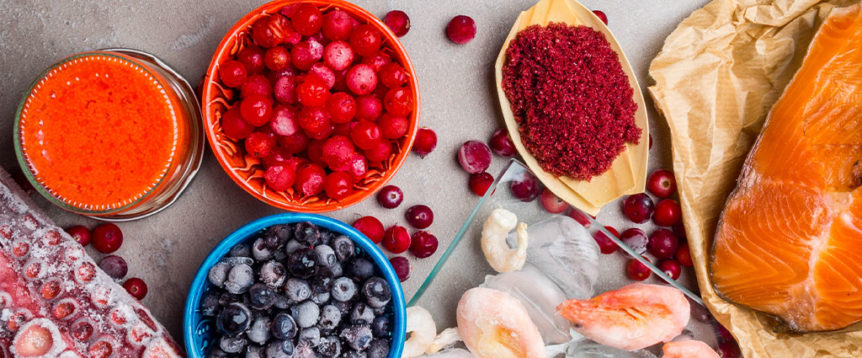› What is it?
Astaxanthin is a carotenoid pigment that occurs in salmon, trout, microalgae, yeast and shrimp, among other sea creatures, and is what gives the fish and seafood its pinkish color.
› Health benefits
An antioxidant, astaxanthin is said to have many health benefits. It’s been linked to healthier skin, endurance, easing joint pain, male fertility and may even have a future in cancer treatment.
Skin
Astaxanthin can be used topically to promote healthy skin. A recent study showed that combining topical and oral doses of astaxanthin can help to smooth wrinkles, make age spots smaller and help maintain skin moisture. More study is needed to confirm these findings.
Exercise
There has been much study on how astaxanthin can affect endurance as well as fatigue levels after exercise. Studies on mice show that it can boost the body’s use of fatty acids, which helps endurance, and prevent muscle and skeletal damage. So far, however, evidence for its effects on human exercise is still lacking.
Joint pain
Some studies show that astaxanthin may be able to reduce inflammation and pain symptoms related to arthritis. However, a study on the relationship between astaxanthin and carpal tunnel syndrome found no evidence to support the claim.
Male fertility
A 2005 study of astaxanthin showed positive results for male fertility. Researchers saw improvements in sperm parameters, like count and motility, and improved fertility in the group who received a strong dosage of astaxanthin. As this was a relatively small-scale study, more evidence and research is needed to support this claim.
Cancer
Research has found that an extract from algae that makes astaxanthin slowed the growth of breast and skin cancer cells.
› How much do I need?
Recommended amounts vary based on the manufacturer and use purpose. The majority of clinical trials have used a dose of astaxanthin between 6 mg and 12 mg per day. The appropriate dose depends on several factors such as the user’s age, health and several other conditions. Be sure to follow relevant directions on product labels and consult your pharmacist or physician or other healthcare professional before using.
› In food
Astaxanthin is found in several types of seafood, including:
- Salmon (3.5 ounces of sockeye salmon has about 4.5 milligrams of astaxanthin.) Rainbow Trout
- Shrimp
- Lobster
› Dietary supplements
Astaxanthin supplements are widely available in capsules and gelcaps.
Please consult your health care provider before making changes to your vitamin/supplement regimen.


